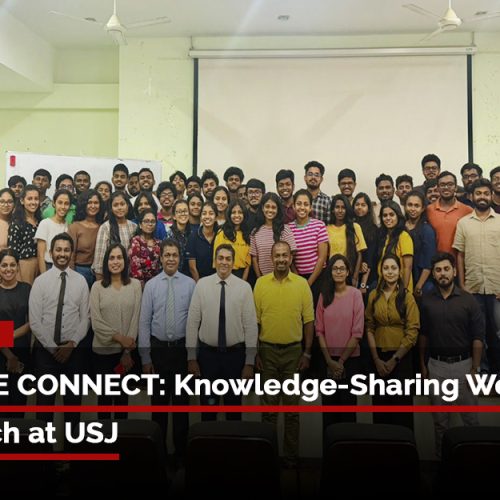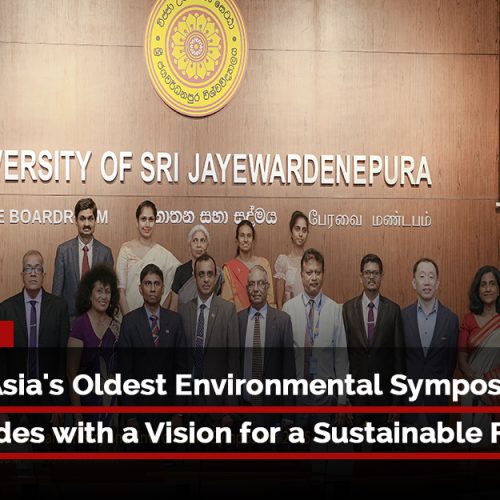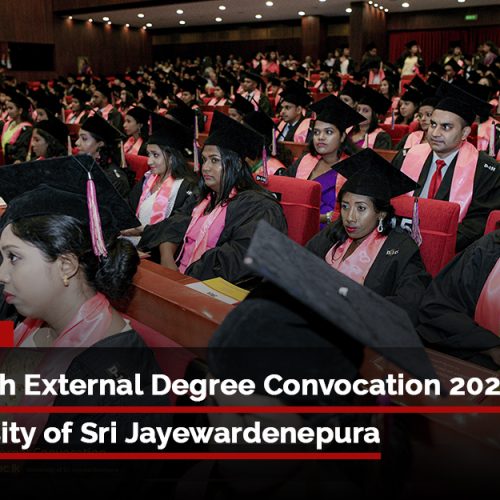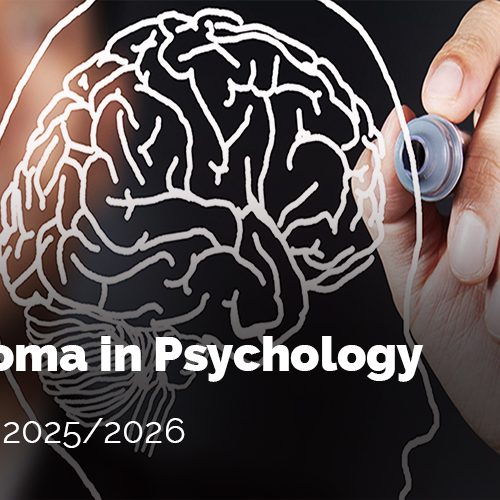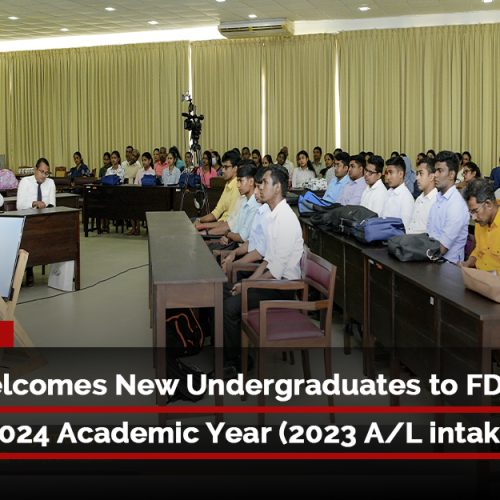 Commemoration speech delivered in honor of Reverend Weliwitiye Sri Soratha Thero: the trailblazer of contemporary Piriven University system and the pioneer of the University of Sri Jayewardenepura.
Commemoration speech delivered in honor of Reverend Weliwitiye Sri Soratha Thero: the trailblazer of contemporary Piriven University system and the pioneer of the University of Sri Jayewardenepura.
By
Professor Malini Aandagama, Former Head of the Department of History and Archeology of University of Sri Jayewardenepura and the Secretary of the Mahavansa Editorial Board of the Department of Cultural Studies.
Commemoration ceremony held at the University of Sri Jayewardenepura on 17th July, 2015.
I consider this opportunity to deliver thecommemoration speech in memory of Rev.Welivitiye Sri Soratha Thero as a great honor. Without any hesitance or reservations, I would declare that Rev Sri Soratha Thero is akin to an incessant fountain of great wisdom and knowledge. In this address I would like to talk about his birth, his path to monkhood, education, his ordination as a priest, integration into Vidyodaya Pirivena and its pedagogical staff, him being elected as the Chief Incumbent Priest at Vidyodaya Pirivena, and his becoming the first Vice Chancellor of the Vidyodaya University. Moreover I would give special attention to the services rendered by his scholarly skills, literary prowess, pedagogical expertise as well as his honorable and virtuous comportment. Many tributes have been paid to honor this great personality, both verbally and though numerous written documents; yet to give a full account of this distinguished and noble personality is deemed impossible as the diverse philosophies, teachings, theologies, perspectives and traditions espoused by him are far too numerous.
Thus I would like to deviate from the traditional modes of delivering a commemoration speech to avoid the facts that are often reiterated, and instead give more attention to the Piriven education system in Sri Lanka from a historical perspective, and to highlight the appreciable service rendered by Soratha Thero in that regard.
I believe that most of you who are gathered here have a considerable amount of understanding with regard to the Piriven education system in Sri Lanka. Yet it cannot be denied that today, there are no proper methods to educate the school children, Undergraduates and the general youth about the historical factors affiliated to Piriven education system. It is not unknown that in any country scholars should take measures to ensure the continuity of national heritage and to propagatethe unaccountable value of that heritage. It is high time that the present day officials affiliated to Piriven Universities take an active part in that endeavor as was done in the past.
In commemorating the eminent personality of Sri Soratha Thero, both the officials and the students should first try to understand the philosophy espoused by him. One should not only try to inculcate his exemplary and highly virtuous behavior with regard to his career from a student to becoming the Vice Chancellor of Vidyoday University, but also from the services rendered by his religiosity and administrative capabilities. Thus it is obvious and indisputable that we should endeavor to at least raise the standards of University of Sri Jayewardenepura to those of the world renowned Piriven Universities of the Anuradhapura era such as Jethawana and Abayagiri.
As a result of the reawakening of nationalism that surged forth during the post-independence era and subsequently due to the political transmutations in 1956, a Parliamentary Act was passed in 1958, through which Maligaknda Vidyodaya Pirivena was reestablished as the Vidyodaya University.It must be noted that this Vidyodaya Pirivena was initiated by Rev. Hikkaduwe Sri Sumangala thero in Maligaknada in order to fuel the outpouring sense of Nationalism in 1863. It is this Vidyodaya Pirivena of Sri Lanka that is today known as the University of Sri Jayewardenepura. Though these recent historical facts with regard to Piriven Universities, we can get an understanding as to their development throughout a period of almost 150 years.
Yet in the endeavor to trace the development of the national identity of Sri Lanka though the heritage of Buddhist University system these facts are not deemed sufficient. For that we should look back into the period of colonization during which there were several attempts to tarnish and erase our unique national heritage. We should go back to investigate the Buddhist education system – of which Piriven Universities are the highetst form of institution – that started in the third century. In an era where our national heritage is threatened by so called development projects, it is no secret that Sri Soratha Thero has already bestowed us with the ways and means of curbing this unfortunate situation. Although the relevant parties highly appreciate the these services rendered by Sri Soratha Thero, there is the question of the guidance put forward by his teachings not being put into practical use today. If we follow the path lighted by Sri Soratha Thero with regard to Buddhist education system, and integrate that in to what is today known as ‘national development,’prevention of the ongoing degradation of the country will become a reality
As in the days of yore, the driving force for this task should come from the Universities, especially Piriven Universities. A greater part of this humongous responsibility falls under Vidyodaya University which has now become a modern day University. In order to highlight that modernization of Piriven Universities by adapting to the traditions of Western University culture and engaging in mal practices that go against our own traditional conventions of University education (such as unacceptable profit motive, neglecting the need for religious education and inculcating moral values) are not advisable especially for the University of Sri Jayewardenepura, which is the forefather of Vidyodaya University, I deem it right to explore the nature of Piriven Universities of the past.

THE HISTORY OF PIRIVEN EDUCATION SYSTEM AND PIRIVEN UNIVERSITIESIN SRI LANKA.
With the proper inception of Buddhism in Sri Lanka during the kingship of king Devanampiyatissa 24 centuries ago, there was systematization of each and every aspect of the societal life including education. With these transmutations a new layer was added to the social strata: that of the clergy. It was evident that the clergy was both adept and eager at teaching as well as learning. Thus during the early years of the establishment of Buddhism, the places where the clergy resided (Arama) and the Piriven both became akin to one single establishment. Clergy residencies such as Kalaprasada (Which is the first such habitation built by king Devanampiyatissa), Sunabatha, Marughana, Ellagga, are today known as prominent clergy residencies as they were also used as educational institutions.
As Thissamaharama built by King Devanampiyatissa in Mahamewna later expanded to be established as Mahavihara, the clergy affiliated with it were given separate domains for living in and for education: with this, the locations specified for education transformed into Piriven. The first such establishment reserved solely for learning is the Mayurapada Pirivena which was established by King Buddhadasa in close proximity to Mahavihara. Gradually, the construction of Jethavana and Abayagiriya paved way for the accumulation of Piriven in the country. Apart form that the clergy habitations spread all over the country were also used as small scale Piriven.
In the main learning centers of Abayagiri, Mahavihara and Jethavana both local and foreign clergy members engaged in learning activities and these centers were akin to Universities with a large number of affiliated Piriven all over the country. During the earlier days, learning and teaching were conducted through by heartening and the oral tradition. Later on written documentation and learning through experimentation and research began to play a significant role in this process. Yet there is also proof to suggest that written documentation took place much earlier, during the era of Maha Mihindu Thero. In fact it is said that during this period the Pali texts were translated into the language of Atuwa community and that copies of these were kept at the Diksanda Piriven. Moreover during the era of King Walagmanba, the Thripitaka was documented in the written format and then onwards diverse books have been written by numerous monks.
By the fifth century, there were a lot of such local documents commonly referred to as “Hela Atuwa.” Among these, Maha Parichchci Atuwa, Kurundhi Atuwa, Andha Atuwa were prominent. Up to this specific period several books had been written in Pali, Sanskrit and Hela (the predecessor of modern day Sinhala) languages. There is also proof to suggest that documents such as Deepawansa, Mahawansa, Seehala Namaskara Warnana, Maha Bodhi Wansa Katha etc. were stored in Piriven affiliated to Maha Pirivena in areas such as Anuradhapura and Kelaniya. It is also said that both Mahanama Thero and Buddhagosha Thero associated books such as Sinhala Atta Katha during this period. Though such historical evidence it is obvious that both local and foreign clergy members engaged in research work in these Piriven affiliated to Maha Pirivena.
Thereis also evidence to suggest that not only Mahaviharaya but also Jethavana served as a University that offered boarding facilities. It is mentioned in the travelogues of Chinese nationaist Pahiyen Thero that he himself and about 5000 clergy members of Abayagiri engaged in research work at Abayagiri. It also states that during that time, there were about 5000 clergy members residing at Abayagiri, About 3000 at Mahaviharaya and about 2000 at Mihinthale. Each of these clergy recidences was also used as Piriven and each Pirivena possessed a library. This is a prominent feature in the education system of Anuradhapura era. Granthakara Pirivena is known to be the library of Mahaviharaya while Uththaramulaya and Kapparamulaya can be named as the libraries that were housed by Abyagiri. Buddhagosha Thero who engaged in experimentation while residing at Granthakara Pirivena has mentioned in his writings that researches were conducted at Piriven such as Chiththala Pabbatha and Chethiyagiri.
These historical evidence show that Undergraduates who engaged in writing research thesis not only conducted their research work in the University they were boarded at but also in other Universities and affiliated institutions spread all over the country. It is also mentioned that other than Buddhagosha Thero, foreign scholars like Buddhadaththa and Dhammapala engaged in research work in local Piriven Universities and that they took copies of Buddhist writings found in local Piriven libraries.
The features of University education and administration that we highly appreciate and believe to have acquired from Western Universities have indeed been part and parcel of Universities of the Orient even before the establishment of Western Universities. This is clearly seen in the old Piriven Universities of Sri Lanka. The current University system popular in European countries began in 11th -12th centuries: world renowned Universities such as Padua University and Palermo University in Italy, University of Sorbonne in Paris, Oxford and Cambridge Universities in England are said to have stared in that era. There is ample evidence to suggest that Sri Lankan Piriven education syatem, which was centered on Buddhist teachings was very systematic and were aimed at promoting national heritage while engaging in standardized research and administrative work. A prime example for this comes from the way in whichtranslations from Helatuwa to Pali were carried out by Buddhagosha Thero.
Buddhagosha Thero, whose main purpose of visiting Sri Lanka was to translate Helatuwa scripts into Pali, was not allowed to engage in the task without sitting for a preliminary test of his skills. Thus he was ordered to write a thesis consisting of 3 volumes based on the “anthojata bahijata” Buddhist verse in Sanyuktha Nikaya. Buddhagosha Thero completed the task successfully by compiling the Vissuddhi Maggha which was akin to the Thripitika in its content validity.
Through this incident numerous important factors relating to the clergy education system in Sri Lanka are revealed in times as early as the fifth century. Buddhagosha Thero visiting Sri Lanka for translation work highlights the fact that Mahaviharaya was well known in foreign countries as an institution that bore the standards of a University. Moreover the fact that a test was assigned to Buddhagosha Thero before he was allowed to engage in translation work elucidates that scholarly and erudite clergy members resided in Mahavihara at that time. It can also be stated that this test which was assigned to Buddhagosha Thero bears resemblance to the modern day examinations conducted at the post-graduate level to test the knowledge of philosophical areas of studies such as Buddhism. In addition to that it also points out the important fact that during that period teaching was mainly conducted in Sinhala language.
After this preliminary test which proved the scholarly expertise of Buddhagosha Thero beyond any doubts, he was assigned the task of translating Helatuwa into Pali. Buddhagosha Thero composed a number of “Atuwa stories” based on the Vinaya Pitaka. This shows the in depth knowledge possessed by Buddhagosha Thero with regard to the Thripitaka and on Buddhist doctrine as a whole. In appreciation of this great feat he was awarded with the graduation honorary title of “Mahavihara Vansalankara” by Mahavihara clergy members led by Sankapala Thero. This incident highlights the fact that in those days too graduation honorary titles were awarded for those who excelled in scholarly domains of study.
This once again illuminates the high standards of education that prevailed in the country in that period. A prominent feature of Piriven education method is the preparation of documents needed for studies. Thousands of such documents dating from the Anuradhapura era can still be found preserved in clergy residencies and Piriven. Written documentation mainly took place using what is locally referred to as the“puskolapotha” and the” panhinda”( akin to the quill and the parchment but made from ingredients derived from tress). As the task of writing using the puskolapotha and panhinda cannot be deemed as unchallenging, conducting research work was not facile as it is today. As written documentation augmented with time, the need for these instruments was very high and the duty of supplying them fell on the Piriven.
After Mihindu Thero preached the Buddhist doctrine to the Sinhalese, two significant events took place: on one hand local clergy members had to learn Pali language in order to understand the Buddhist doctrine that was preached in Pali and subsequently what they learnt was translated into Sinhala so that the common masses could grasp these teachings. As both these endeavors were in progress by the fifth century it is evident that teaching and learning took place both in Pali and Sinhala languages. The clergy members of Mahaviharaya excelled in Pali and mainly the Thripitaka and Atuwa were taught at the Mahavihara. Yet in Abaygiri, other subjects such as Astrology, Medicine, Sanskrit, and subjects relating to ghost studies were also taught. Gradually all the Piriven included Sinahala language and grammar, Logic, Art and Sculpture, poetry in the curriculum.
After defeat of Chola dominion (1017 – 1070) the kings that descended the throne such as Vijayabahu the First, Nishshankamalla, Maha Parakramabahu took measures to develop various domains including Piriven education system.
Afterwards during the eras of Kurunagala and Dambadeniya, the royal sponsorship for Piriven education saw a sharp augmentation and the diversity of subjects taught increased as well. Written documentation at this time also took place in the form of poetry and songs based on various disciplines. Kaw silumina, Sidatha sangarawa, Elusandas Lakuna (which dealt with rules of poetry composition), Dambadeni KAthikawatha (Which included the nature, rules and regulations affiliated to clergy life), Kandawuru Siritha (dealing with day do day activities of King Parakrmabahu the Second) can be cited as prime examples. Thus it was the Piriven education system that was prevalent in Sri Lanka even at the beginning of Western invasions in the 16th century. At that time there were a lot of Piriven such as Vidagama Sri Ganananda Pirivena, Thotagamuwe Vijayaba Pirivena, Karagala Padmawathi Pirivena, Dewnuwara Diyathilaka Pirivena; these Piriven of the standards of Universities. Both the clergy and the lay people got the opportunity to engage in learning activities in these centers, and subjects other than religious studies were also taught.
With Western invasions in the 16th century and the introduction of Christianity, measures were taken to spread Christianity though a novel education system. Moreover for the ease of British administrative work English was widely used and by the third decade of the 19th century, English was legalized as the medium of education. All these factors led to a sharp decline in the learning of Sinhala, Pali and Sanskrit.
Although two armed conflicts took place in the years 1818 and 1848 to abort the colonial domination in Sri Lanka, they were brutally curbed. Yet the clergy and the lay scholars, who were not discouraged by these attempts, took measures to reinforce the Piriven education, Buddhist andSinhala languagestudies land to pave way for the rebuilding of Sri Lankan national heritage.
In the 19th century Walane Sri Siddartha Thero took a pioneering stance in fostering and rebuilding Piriven education system. This was mainly achieved through the Parama Dhamma Chethiya Pirivena in Ratmalana. As a result of this, three great Theros were guided into the limelight: Hikkaduwe Sri Sumangala Thero, Ratmalane Sri Dhammaloka Thero and Batuwanthudawe Sri Dewarakkitha thero. It is Hikkaduwe Sumangala Thero who initiated the Vidyodaya Pirivena in 1873. Thus as we commemorate Sri Soratha Thero, we should not forget to acknowledge the great services rendered by Hikkaduwe Sri Sumangala Thero as well.
After the demise of Walane Sri Siddhartha Thero, Hikkaduwe Sri Summangala Thero was appointed as the chief preceptor of Parama Dhamma Chetiya Pirivena. At around this time, he was in search for a suitable location to initiate an educational institution in the Colombo area. He was able to acquire a land in Maligakanda from the Buddhist aristocrat, Don Andris Perera Appuhami. Summangala Thero established the institution and named it as Vidyodaya. As English medium education was then considered as a special qualification to obtain government jobs, even Buddhists were disinclined to take up Piriven education. Due to this situation maintaining the Pirivena which was established in December 1873, with only seven students was a great challenge. It was not easy to get students to enroll even for the Parama Dhamma Chethiya Pirivena in Ratmalana, which was the most distinguished institution at the time and in which Sri Sumangala Thero conducted his studies.
Before long however, Viyodaya Pirivena became the most prominent institution in Asia for Pali language and Theravadi Buddhist studies. In fact as it became renowned like the earlieracclaimed Piriven such as Jethavana and Abayagiri., both local and foreign students started flooding in for research work. With the hard work and determination of three years to make the Vidyodaya Pirivena a distinguished institution, it was beginning to reach the standards of a University. In 10th January 1876, Governor, Sir Henry William Gregory exclaimed his pleasure in witnessing the progress of the Pirivena after attending a ceremony; as he was also in good terms with Sri Summangala Thero, he agreed to render his cooperation for the future growth and maturation of the Pirivena. Thus after a draft bill recommended and seconded by Annada Kumarasami and James de Alwis (members of the Constitutional Congress), it was agreed that an annual sum of 60 pounds should be given for the betterment of the Vidyodaya Pirivena. This was the first time that a non-Buddhist government took measures to present monetary funds for a Buddhist educational institution.
The services rendered by Sri Sumangala Thero are not limited to the initiation of the Vidyodaya Pirivena and paving way for intellectual enlightenment; in fact the religious services rendered by him are of no lesser value. The translation of the world famous Mahavansa into Sinhala in collaboration with Honorable Battuwanthudawe Dewarakkitha is one the greatest feats of religious value achieved by Sri Summangala Thero.
A significant event that started in this era was the debates that took place between Buddhists and Christians on the basis of religious philosophy. There were popular debates such as the debate of Baddegama, debate of Gampola, debate of Orugodawatta, and the world famous winning debate of Panadura (Panadura Wdaya), in which Migettuwatte Gunanada Thero took part aided and guided by Sri Summangala Thero.
Sri Summangala Thero was very modest and did not hanker after ranks and social positions and instead he was awarded a great number of honorary titles. In April 29 1911, Sri Summangala Thero passed away to the immense sorrow of clergy scholars and the elite lay people.
It was Sri Soratha Thero, the fifth Chief Incumbent Priest of Vidyoday Pirivena, who followed the path lighted up by Hikkaduwe Sri Summangla Thero and elevated the Vidyodaya Pirivena to gain international acclaim. The leadership skills demonstrated by him at the time when Vidyodaya Pirivena was reestablished as the Vidyodaya University (from a Parliamentary Act) should be greatly valued. Moreover the efforts rendered by him as the Vice Chancellor to raise the standards of the Universtiy to match those of other Piriven Universities are highly appreciated up to this day.
In May 23rd 1897, Soratha Thero was born as Chandradasa Jayewardene as the son of the Ayurvedic Doctor Mr. Johannes Kumarasiri Jayewardene and Mrs, Alice Amarasinghe in Weliwitiya, Galle. As three chidren born prior to him died, his parents decided to ordain him as a monk at the age of 15 and he was handed over to Rev. Kahaw Premarathana Thero in Thilakaramaya, Hikkaduwa. In December 15th 1912 he entered monkhood as Waliwitiye Soratha. After successfully engaging in studies Soratha Thero enrolled for the Vidyodaya Pirivena in1917, having ordained in Mahanuwara Malwathu MAhawiharaya.
From his student days Sri Soratha Thero wrote a number of articles for the collection of religious documents of the Vidoyadaya Pirivena and proved his scholarly expertise. His talents were greatly appreciated by the then Chief Incumbent priest, Rev. Mahagoda Sri Gnanissara Thero and the Deputy Chief Priest, Rev. Kahave Sri Rathnasara Thero. Sinhala, Sanskrit, Pali, Archeology, Logic, History, Astrology, Ayurveda studies and other such age old disciplines were included in the curriculum of Vidyodaya Pirivena and Sri Soratha Thero excelled in all of them.
Integrating into the staff of the Vidyodaya Pirivena was not as easy task. Apart from scholary expertise it was the custom to select those who have obtained the “Samaraja” prize or the Ubayasekara Swarna Mudrika” award. Moreover, possession of knowledge regarding the Vidyodaya tradition, and being intent upon its continuity, were considered as added qualifications. The proficiency in languages and untainted wisdom shown by Sir Soratha Thero in the last stages of his students were enough to please the Chief Incumbent Priest, Kahawe Sri Sumangala Rathnasara Thero, and thus Sri Soratha Thero was given a Deputy Preceptor post at the Vidyodaya Pirivena.
In 1923 Sri Soratha Thero passed with flying colors in Sinhala, Pali and Sanskrit languages at the Pracheena Final examination held by the Pracheena Bashopakara Society: In Fact, Sri Soratha Thero obtained All Island First Place and was awarded with Honors. Moreover, he was able to achieve the Ubayasekara Swarna Mudrika Award, which is considered as the highest possible achievement in the carrier of a Piriven Student. His next achievement was being selected as a permanent member of the staff of Vidyodaya Pirivena. In the meantime he was awarded with a government scholarship to engage in research work in Calcutta, India and was appointed as the Chief Editor of the the Pali – Sinhala Thripitaka series compiled in honor of the 2500 “Sambuddhathwa Jayanthi”. From then onwards, after having obtained the Pandith Degree, he devoted his whole life to teach and to record what he has learnt for the benefit of others.
A significant feature in his religious teachings is the presentation of facts to befit the current society; yet he never distorted Buddhist teachings. Sri Soratha Thero has highlighted the importance of learning religion with a shrewd and balanced judgment while being on par with the teachings of other religions. In a document written for the 1947 Gunasena Vesak Programme he has mentioned that: “wise Buddhist priests should enhance their knowledge and religious perspective by perusing documents of other religions such as the Holy Bible and the Koran”.
A statement made by Ganegama Sri Saranankara Thero, regarding the religious knowledge and the invaluable services rendered by Sri Soratha Thero for the betterment of the religious domain, brilliantly captures the eminence of Weliwitiye Sri Soratha Thero: “In Weliwitiye Sri Soratha Thero we find the greatness of both Buddhagosha Thero and Gurulugomin at once. I feel that he is the reincarnation of Thotagamuwe Sri Rahual Thero who lived in the 15tn century, and Hikkaduwe Sir Sumangala Thero who lived in the 19th century. It seems to me that he is the last notch in the chain of erudite scholars such as Dimbulagala Maha Kashshapa, Dharmakeerthi Sri Rhaula. He is a mobile library”.
Thus it is obvious that Rev. Weliwitiye Sri Soratha Thero is a land mark personality in the Sri Lankan Buddhist Heritage.
THE ROLE PLAYED BY WELIWITIYE SRI SORATHA THERO IN THE INITIATION OF VIDYODAYA UNIVERSITY.
Weliwitiye Soratha Thero was often bestowed with numerous important responsibilities. He was granted the title of Chief Priest for the Galle District by the Malwathu Maha Viharaya. In 1936, he was honored with the post of Deputy Chief Preceptor in Vidyodaya Pirivena. As the then Chief Preceptor, Baddegama Piyarathna Thero (between the years of 1936-1958) was in a bad health condition before his demise, many of the duties of the Chief Preceptor also fell on Sri Soratha Thero. Thus the responsibility of converting Vidyodaya Pirivena into Vidyodaya University fell solely on Weliwitiye Sri Soratha Thero.
From 1945 onwards medium of education was to be Sinhala. The actual initiation of this took place in 1947. After the political transmutations that took place in 1956, Sinhala was selected as the national language. At that time there was only one University in the country and that was known as the University of Sri Lanka. In this university all the academic work were conducted purely in English. As most of the student population conducted their preliminary education in Sinhala, the number of students who got the opportunity to enroll for the University was strictly limited thus it was the need of the time to establish a University that conducted higher studies in Sinhala medium. The Government of the Prime Minister, S.W.R.D. Bandaranayake decided to take measures to remedy the situation.
According to a decision of the Education Minister of the time, W. Dahanayake, Soratha Thero was asked to formulate the draft bill that was needed for the conversion of Vidodaya Pirivena into Vidyodaya University. The draft bill titled “Mandate for the establishment of the Vidyodaya University” was handed over to the Prime Minister with the support of Reverend Wimaladharma Thero, Reverend Balagalle Vimalabuddhi Thero (Staff members of Vidyodaya Pirivena) , Preofessor Senerath Paranvithana And D.P. Jayasekara. This draft bill introduced a number of Sinhala terms to be used for various titles and institutions affiliated to the Piriven University culture, which were up to then used in English. Moreover several courses that were deemed apt for a Piriven University too were recommended in the draft bill. Eventually the entire scheme needed for the establishment of the Vidyodaya University was carried out by Soratha Thero.
After the approval of the draft bill regarding the conversion of Vidyodaya nad Vidyalankara Piriven into Universities, Welivitiye Sri Soratha Thero was appointed as the Vice Chancellor of the Vidyodaya University. After selecting the officials for the administration and the members for the staff, Vidodaya University officially commenced on the 19th February 1959. From then onwards Weliwitiye Sri Soratha Thero devoutly worked for the betterment of the University in accordance with Buddhist religious traditions.
Sri Soratha Thero took measures to introduce new subjects while highlighting the fact that Vidyodaya University should give prominence to the subjects that were taught in old Piriven Universities such as Pali, Sinhala, Sanskrit and Buddhist studies. Form that period onwards, Sri Soratha Thero took the necessary steps to increase the resources of the University such as building a library.As the number of students increased, they were provided with the means to learn subjects that were of contemporary value.
The new University was commenced using the same buildings that were used for the Pirivena in Maligakanda. Yet it was difficult to maintain the University as the space was not sufficient. Apart from that Sri Soratha Thero desired to conserve the Vidyodaya Pirivena in Maligakanda. In view of these factors, Soratha Thero decided to shift the Vidyodaya University to a more spacious land.
King Parakramabahu the Sixth has provided the Sunethra Devi Pirivena a large amount of land in memory of his deceased mother. Sunethra Devi Pirivena this possessed a huge land located in a serene location away from the busy surburbs of Colombo; Sir Soratha thero wished to obtain this alnd and discussed matter with Sumanathissa Thero of Sunethra Deve Pirivena. Sumanthissa Thero, who used to be a former student of Vidyoday Pirivena agreed to present a land lacated nearby Wijerama junction in Nugegoda, where the University of Sir Jayewardenepura stands today.
In 20th July, 1959, Soratha Thero obtained 25 acres from the above mentioned land and as he wanted to construct the buildings in the Oriental architectural styles, went on an Expedition to University of Calcutta to get an idea of the building structures. After building the main building of Sumangala hall, Rathanasara hall, Gnaneswara hall, a well-equipped library, and the main hall built to held convocations and named after Prime Minister Bandaranayake along with hostels, the opening ceremony took place in 22nd December 1961. The honors of opening the new building were performed by Prime Miniter Sirimavo Bandaranayake, who was world renowned as the first ever lady Prime Minister in the world.
The course units offered at Vidyodaya University not only included Archeology, Astrology and Ayurveda, but also Management studies which was not offered at any other University in the country at the time. Although it was a Buddhist University, Soratha Thero belived that for it to become a University in it real sense, Science studies too should be included in the curriculum. Accordingly this was accomplished in 1961.
A long address was later presented by Soratha Thero as to what should a graduate become after educating himself/herself in a sacred abode that offered a number of facilities and novel disciplines of study to pursue. The gist of the address is as follows:
“It is our mission to present the society with intellectual and not merely to breed graduates. If one endeavors to transform this sacred abode to a place where degrees are sold, or to a place in which student are given degrees in a mere mechanical fashion that will only lead the University as well as the country to be dragged in disgrace. If our graduates are not proven with the expected intellectualism that their degree claims them to possess, people will indubitably arrive at the conclusion that our University is a ‘store’ where degrees are ‘sold’. Thus everybody affiliated to the University should keep in mind not to engage in any act that will undermine the quality of our degree and the research work”.
This statement highlights the fact that Weliwitiye Soratha Thero strictly objected in creating just another University: what he desired was to establish an institution that formed intellectuals in accordance with our national heritage. We can also state that his belief that those who were entranced by Western ideologies would never take any measures for the continuation of our heritage, led him to light up the path that was needed for the preservation of that unique and invaluable heritage. Thus, today as we commemorate this great leader we should keep in mind that the greatest honor we can bestow upon him is to reach the goals that were perceived by him regarding the betterment of the University.
In 17th July 1963 this erudite scholar who rendered a great service to the country took his last breath amidst the outpouring sorrow of all those who valued his eminent and charismatic personality. In conclusion I must emphasize that all those who appreciate this great leader should determine to be benevolent to the society and the entire human race by each and every deed.
Translated by: Dimuthu Dharmapala,
Undergraduate of the Department of English,
University of Sri Jayewardenepura.



